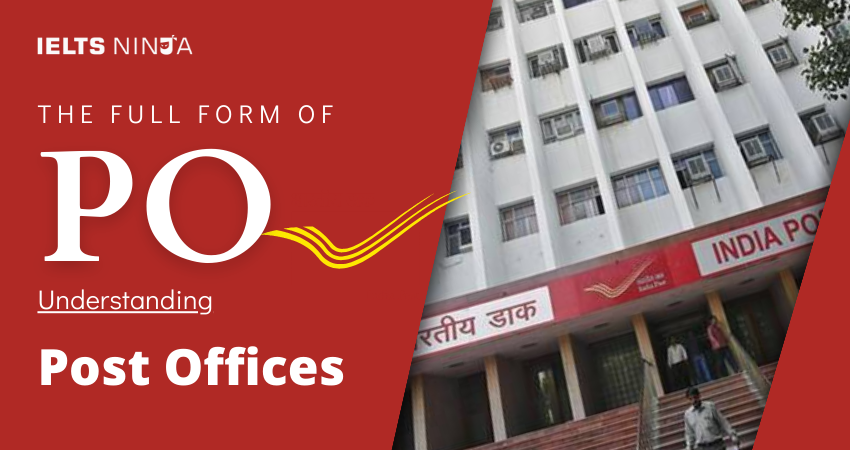In the realm of postal services and communication, acronyms often represent key terms and institutions that have played a crucial role in connecting people and facilitating the exchange of mail and parcels. One such acronym that holds historical significance in the field of postal services is “PO.” PO stands for “Post Office.” In this article, we will delve into the full form of PO, understand its role, functions, and its enduring importance in providing mail and postal services to communities around the world.
What Does PO Stand For?
PO stands for “Post Office”. A Post Office is a physical location or facility where postal services are offered, including the sending, receiving, and sorting of mail and parcels.
Understanding PO (Post Office)
Post Offices have been a vital part of communication infrastructure for centuries. They serve as the interface between individuals, businesses, and postal authorities, enabling the exchange of letters, packages, and other forms of mail.
Key Functions and Details of Post Offices (POs)
Mail Collection and Acceptance:
Post Offices are responsible for collecting mail from individuals and businesses, accepting packages and letters, and processing them for further delivery.
Mail Sorting:
Post Offices sort incoming and outgoing mail to ensure it reaches its intended destination efficiently. This includes categorizing mail by destination and delivery method.
Stamps and Postage:
Post Offices sell postage stamps and provide services for calculating postage costs based on the size, weight, and destination of mail items.
Parcel Services:
Post Offices offer parcel services for sending and receiving packages, including options for express delivery and tracking.
Financial Services:
Many Post Offices offer financial services such as savings accounts, money orders, and currency exchange, making them convenient locations for basic financial transactions.
Address Verification:
Post Offices assist customers in verifying addresses to ensure accurate and timely delivery of mail and parcels.
P.O. Boxes:
Post Offices provide P.O. boxes or mailboxes for individuals and businesses to receive mail securely.
Government Services:
In some countries, Post Offices offer government services such as issuing identification cards and handling certain administrative tasks.
Philatelic Services:
Post Offices often cater to philatelists and stamp collectors by issuing commemorative and special edition postage stamps.
Also Read: Best online IELTS coaching & training academy
Importance of Post Offices (POs)
Post Offices have been instrumental in connecting people and communities for centuries. They play a vital role in facilitating communication, commerce, and the delivery of essential goods and services.
Digital Transformation – PO
In the digital age, Post Offices have adapted to offer online services, including online postage purchase, package tracking, and electronic bill payment.
Conclusion
In conclusion, the Post Office (PO) is a cornerstone of postal services, providing essential functions that enable the efficient exchange of mail and parcels. While the nature of communication has evolved with the advent of technology, Post Offices continue to serve as key hubs for traditional and digital postal services. As you encounter the abbreviation “PO” in discussions related to mail and postal services, remember that it signifies an institution dedicated to connecting people and facilitating communication across distances.








